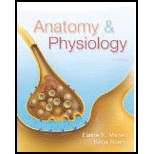


In Chapters 7 and 8, you were introduced to Kayla Tanner, a 45-year-old mother of four who had suffered a dislocated right hip in the bus accident on Route 91. Six weeks after the injury, Mrs. Tanner reported that she was still unable to walk or run without hip pain, and had weakness in her hip, knee, and ankle. Mrs. Tanner walked with a limp that her doctors attributed to weaknesses in flexion at the knee, inversion of the foot, and plantar flexion.
Electromyography (which measures muscle electrical activity) and nerve conduction studies (which measure the speed of nerve impulses) revealed that Mrs. Tanner’s sciatic nerve had been damaged as a result of her injuries—most likely as a result of the nerve being compressed when the hip was dislocated. This large nerve innervates a large number of lower limb muscles. Since her surgery, Mrs. Tanner has been undergoing intense physical therapy and has shown significant improvement.
In order to assess the function and strength of a specific muscle, a physical therapist will often apply resistance (push against the moving limb) to mimic the action of an antagonist muscle. What is an antagonist muscle, and why would the therapist mimic its action?
Want to see the full answer?
Check out a sample textbook solution
Chapter 10 Solutions
Anatomy and Physiology - With CD and Lab. Man. and Access
- Inflamed and swollen tendons caught in the narrow space between the bones within the shoulder joint cause the condition known as ____________________. impingement syndrome intermittent claudicationarrow_forwardIn a general sense, how do skeletal muscles produce movement?arrow_forwardWhich of the following statements is correct about whathappens during flexion?a. The angle between bones is increased.b. The angle between bones is decreased.c. The bone moves away from the body.d. The bone moves toward the center of the body.arrow_forward
- At his ninety-fourth birthday party, Jim was complimented on how good he looked and was asked about his health. He answered, “I feel good, except that some of my joints ache and are stiff, especially my knees and hips and lower back, and especially when I wake up in the morning.” A series of X-ray studies and an MRI scan taken a few weeks earlier showed that the articular cartilages of these joints were rough and flaking off and that bone spurs were present at the ends of some of Jim’s bones. What is Jim’s probable condition?arrow_forwardDifferentiate flexion from torsion. Why do these events occur in the developing embryo?arrow_forward.Explain how the rectus femoris can be part of the quadriceps femoris group that mainly extends the knee but also flexes the thigh?arrow_forward
- The mighty Zimbo claims to have leg muscles so strong that he can stand flat on his feet and lean forward to pick up an apple on the floor with his teeth. Should you pay to see him perform, or do you have any suspicions about his claim? Why?arrow_forwardDistinguish between flexion and extensionarrow_forwardWhat is the role of contraction of the leg skeletal muscles?arrow_forward
- By palpating the hind leg of a cat or dog or by examining a laboratory skeleton, you can see that cats and dogs stand on the heads of their metatarsal bones; the calcaneus does not touch the ground. How is this similar to the stance of a woman wearing high-heeled shoes? How is it different?arrow_forwardExplain the role of joints in skeletal movementarrow_forwardSavannah started a 200-meter dash and fell to the ground in pain.Examination of her right leg revealed the following symptoms: inability to plantar flex the foot against resistance, normal ability to evertthe foot, abnormal dorsiflexion of the foot, and abnormal bulging ofthe calf muscles. Explain the nature of her injuryarrow_forward
 Human Physiology: From Cells to Systems (MindTap ...BiologyISBN:9781285866932Author:Lauralee SherwoodPublisher:Cengage Learning
Human Physiology: From Cells to Systems (MindTap ...BiologyISBN:9781285866932Author:Lauralee SherwoodPublisher:Cengage Learning Medical Terminology for Health Professions, Spira...Health & NutritionISBN:9781305634350Author:Ann Ehrlich, Carol L. Schroeder, Laura Ehrlich, Katrina A. SchroederPublisher:Cengage Learning
Medical Terminology for Health Professions, Spira...Health & NutritionISBN:9781305634350Author:Ann Ehrlich, Carol L. Schroeder, Laura Ehrlich, Katrina A. SchroederPublisher:Cengage Learning Human Biology (MindTap Course List)BiologyISBN:9781305112100Author:Cecie Starr, Beverly McMillanPublisher:Cengage Learning
Human Biology (MindTap Course List)BiologyISBN:9781305112100Author:Cecie Starr, Beverly McMillanPublisher:Cengage Learning



